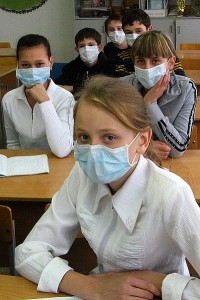A variety of factors trigger a flu season, making it difficult to predict. We don’t fully understand these factors yet, let alone how they are linked.
It’s because we can’t forecast the start of the season that we carry out projects like Decipher my data! Flu!
We can at least detect flu and so far this year the Health Protection Agency has only found low levels of flu circulating in the community. Our school data is consistent with this finding and it’s been hovering at around 10-16 days missed due to illness per 100 pupils per week. Knowing this baseline figure allows us to establish the levels of school illness when there isn’t much flu around.
Some of things we think trigger the start of a flu season include temperature and humidity. Others include how people mix with each other, and during the swine flu season in the USA, the timing of the school term was found to be associated with the start of the pandemic. Our immune systems might also play a role, as our ability to fight viruses probably fluctuates throughout the year.
The most recent HPA surveillance report tells us that although levels of flu are still low, some of the measures have shown a slight increase. Not many schools have uploaded data for week 4 yet, and although at the time of writing this it’s our highest level so far, at 16 it’s still within the baseline (i.e. normal) levels. Given the recent cold weather and the fact that there are small amounts of flu circulating in the community, I’ll be watching the data closely over the next few weeks. I hope you’ll be joining me and don’t forget to send us your observations via the LabLogs.



